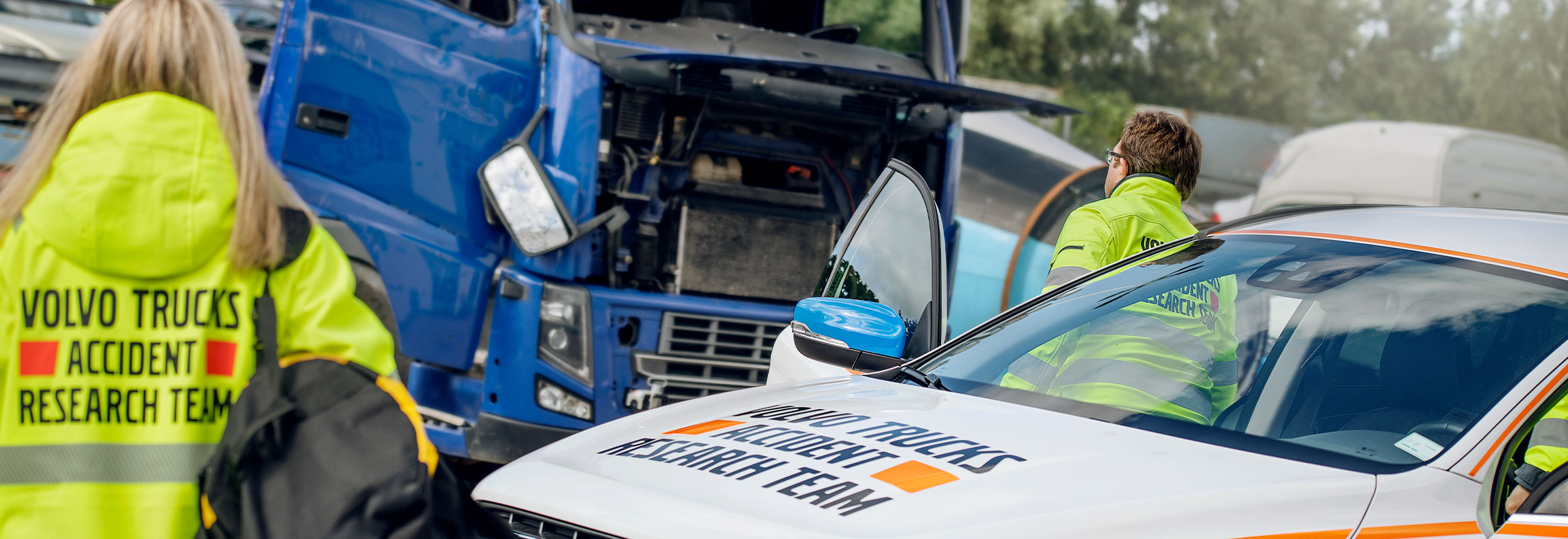
ACCIDENTS: THE ONLY ACCEPTABLE NUMBER IS ZERO
An estimated 1.25 million people are killed in road traffic accidents worldwide, according to the most recent statistics from the World Health Organisation. Conversely, the vision that Volvo Trucks is pursuing for its trucks – and its customers - is zero accidents. Safety has been a focus for company investment since the invention of the three-point seat belt in the late 1950’s. Sixty years ago, Volvo Trucks created a dedicated accident investigation team, the Accident Research Team, to gather, study and analyse data from accidents involving all makes of trucks. This work is on-going and to date, more than 1,700 accidents have been investigated. This information is fed back into Volvo design and engineering teams and used as a basis for product development.
Volvo made the three-point seatbelt patent freely available to the industry shortly after it was developed, saving millions of lives — and Volvo trucks were the first heavy goods vehicles to have seatbelts fitted as standard. Development of the safety cab to withstand the Swedish Cab Test followed. The Volvo cab exceeds EU standards and emphasises Volvo Trucks commitment to build one of the world’s safest driving environments.
The most recent initiative from Volvo Trucks New Zealand is the inclusion of its Active Safety Pack as standard on all truck models from the Volvo FE to the FH16. This includes lane changing support, lane keeping support, driver alert support, electronic stability program, adaptive cruise control and forward collision avoidance with warning and emergency braking.
Volvo leadership in this area has been so comprehensive, and over such a long timeframe, that the company name has become synonymous with safety. Other innovations include the introduction of the front underrun support system into its trucks in 1996, development of Electronic Braking Systems (EBS) and Dynamic Steering. The I-Shift automated transmission is now available with crawler gears providing greater control at low speed, and the Dual Clutch version was launched in New Zealand earlier this year.
“Every Volvo safety innovation is focused on getting the driver safely home, avoiding injury to other road users and damage to vehicles,” said Volvo Trucks NZ Product Trainer, Sean Webb. “While New Zealand’s truck drivers are among the best in the world, these features are designed to operate in the background supporting the driver without removing control. Helping to keep drivers alert, assisting them regardless of road conditions and the actions of other road users.”
Now standard across all Volvo models, the Volvo Active Safety pack includes:
Lane Changing Support: When activated, Lane Changing Support uses radar technology to scan the passenger’s side of the cab for other road users. If it’s not safe to change lanes, a buzzer is triggered and an icon next to the passenger mirror flashes.
Lane Keeping Support: Drifting out of lane is a common cause of serious accidents among truck drivers. With the Lane Keeping Support the road markings are tracked with a camera and the system alerts the driver if he or she unintentionally crosses them.
Driver Alert Support: An intelligent system that tracks driving behaviour, identifying when behaviour differs from normal, as an indicator of tiredness. An alert is triggered and a message displays advising the driver to take a break.
Electronic Stability Control: Reduces the risk of skidding and rollovers. In risky situations it instantly steps in, decreasing engine power and applying brakes to each wheel of the truck and trailer individually.
Adaptive Cruise Control & Collision Warning with Emergency Brake: In heavy traffic, radar and camera-based Adaptive Cruise Control helps drivers keep a safe distance from the vehicle in front by controlling the accelerator and all available brakes. If there is a risk of impact, the intuitive Collision Warning system alerts the driver by projecting a light onto the windscreen. And the Emergency Brake automatically activates, significantly reducing risk of severe injuries.